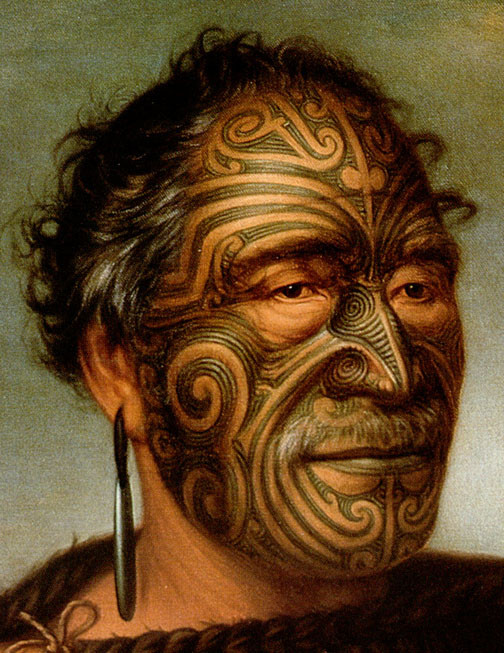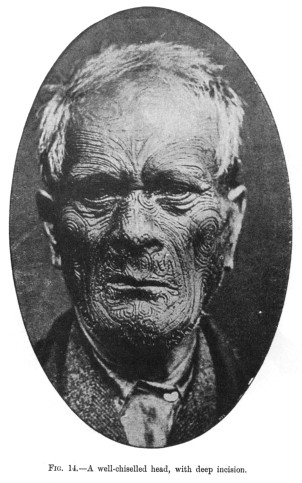Are you curious about the story behind Mike Tyson’s iconic face tattoo? At tattooat.com, we delve into the world of tattoo artistry, providing insights into renowned designs and the talented artists behind them. Explore the origins, cultural significance, and artistic impact of this unique piece of body art, and discover more captivating tattoo stories. Get ready to explore tattoo history, tattoo culture, and body art aesthetics.
1. Who Designed Mike Tyson’s Famous Face Tattoo?
Victor Whitmill, a tattoo artist from Las Vegas, designed Mike Tyson’s tribal face tattoo. Whitmill created the design in 2003 and applied it to Tyson’s face. This tattoo became one of the most recognizable and iconic tattoos in pop culture.
The design, often mistaken for a traditional Māori tattoo, is actually Whitmill’s original creation. It was intended to symbolize Tyson’s “warrior status”. Victor Whitmill is a reputable tattoo artist known for his custom designs. His work on Mike Tyson significantly boosted his recognition in the tattoo community.
2. What Inspired the Design of Mike Tyson’s Tattoo?
Mike Tyson’s tattoo, while not a direct copy, draws inspiration from tribal tattoo designs. The tattoo evokes a sense of strength and cultural heritage. Although many associate it with Māori patterns, it is a unique design created by Victor Whitmill.
The tattoo’s design incorporates abstract tribal motifs, giving it a powerful and intimidating appearance. Tyson has stated that he wanted a tattoo that reflected his warrior spirit. The tattoo artist, Whitmill, blended various tribal elements to achieve this effect. This blend created a distinctive and visually striking piece.
3. What Is The Cultural Significance of Tribal Tattoos?
Tribal tattoos hold deep cultural significance for various indigenous communities around the world. These tattoos often represent identity, heritage, and status within a tribe. Māori tattoos, known as “moko,” are particularly significant, detailing a person’s lineage and social standing.
Traditional tribal tattoos are often applied using handmade tools and natural pigments. The designs are not merely decorative; they tell stories and convey important cultural information. The placement, design, and method of application all contribute to the tattoo’s meaning. In many cultures, receiving a tribal tattoo is a rite of passage, marking a transition into adulthood or a new social role. These tattoos symbolize a deep connection to ancestry and community.
 Maori Chief with Full Face Tattoo
Maori Chief with Full Face Tattoo
4. What Legal Issues Arose from Mike Tyson’s Tattoo?
The design’s uniqueness led to legal issues when the tattoo was replicated in “The Hangover Part II”. Victor Whitmill sued Warner Bros. for copyright infringement. The lawsuit highlighted the debate over the copyright of tattoos.
The court case raised important questions about intellectual property rights in the context of body art. Ultimately, Warner Bros. settled with Whitmill out of court. The terms of the settlement were confidential, but it acknowledged Whitmill’s copyright. This case set a precedent for recognizing tattoo artists’ ownership of their designs.
5. How Did Mike Tyson Choose His Face Tattoo?
Mike Tyson initially wanted a different tattoo. He was considering getting hearts on his face. However, on the day of the appointment, he changed his mind after consulting with Victor Whitmill.
Whitmill suggested a tribal design that would better reflect Tyson’s personality and image. Tyson agreed, trusting Whitmill’s artistic vision. The tattoo was completed in a single session. It quickly became one of Tyson’s defining features. This spontaneous decision resulted in an iconic piece of body art.
6. What Styles of Tribal Tattoos Are Popular?
Several styles of tribal tattoos are popular, each with unique origins and meanings. These include Māori, Polynesian, Samoan, and Borneo tribal tattoos. Each style reflects the distinct artistic traditions of its respective culture.
Māori tattoos, or moko, are characterized by intricate spirals and curved lines that convey personal history. Polynesian tattoos often feature geometric patterns and symbols representing elements of nature. Samoan tattoos, known as “tatau,” are bold and graphic, often covering large portions of the body. Borneo tribal tattoos use delicate lines and intricate details to depict plants, animals, and ancestral figures. These styles continue to inspire contemporary tattoo artists. They blend traditional motifs with modern techniques.
7. How Do Tattoo Artists Protect Their Original Designs?
Tattoo artists can protect their original designs through copyright law. Registering a design with the U.S. Copyright Office provides legal protection against unauthorized use. Artists can also use contracts and non-disclosure agreements to protect their work.
Copyright protection gives artists the exclusive right to reproduce, distribute, and display their designs. Contracts can specify the terms of use and prevent clients from replicating the tattoo without permission. Watermarking digital images of tattoos can also deter unauthorized use online. Legal action can be taken against those who infringe on an artist’s copyright. These measures help artists maintain control over their intellectual property.
8. What Are The Best Practices for Tattoo Aftercare?
Proper tattoo aftercare is essential to ensure the tattoo heals correctly and maintains its appearance. Keep the new tattoo clean by washing it gently with mild soap and water. Apply a thin layer of tattoo-specific aftercare ointment to keep the skin moisturized.
Avoid exposing the tattoo to direct sunlight, which can cause fading. Wear loose-fitting clothing to prevent irritation. Refrain from scratching or picking at the tattoo, as this can lead to infection and scarring. Stay hydrated and maintain a healthy lifestyle to support the healing process. Follow these practices. And you can keep your tattoo looking its best for years to come.
9. How Has Tattoo Culture Evolved Over Time?
Tattoo culture has evolved significantly throughout history, from ancient tribal rituals to modern artistic expression. In the past, tattoos were often associated with specific cultural or social groups. Today, tattoos are widely accepted as a form of personal expression.
The development of new tattooing techniques and technologies has expanded the possibilities for tattoo designs. Social media has played a significant role in popularizing tattoo art. It has connected artists and enthusiasts worldwide. The stigma surrounding tattoos has decreased. More people from all walks of life are embracing body art. Tattoos have become a mainstream form of self-expression and creativity.
 Maori tattoo
Maori tattoo
10. What Are Some Common Misconceptions About Tattoos?
Many misconceptions about tattoos persist, despite their growing popularity. One common myth is that tattoos are always painful. Pain levels vary depending on the individual and the placement of the tattoo.
Another misconception is that tattoos are unprofessional or limit job opportunities. While some professions may have restrictions, many workplaces now accept tattoos. Some people believe that tattoos are easily removed. Tattoo removal is a costly and time-consuming process that may not completely erase the tattoo. Tattoos are a permanent and personal decision. It is important to be well-informed before getting one.
11. Who Are Some Other Celebrities With Notable Face Tattoos?
Besides Mike Tyson, several other celebrities sport notable face tattoos. These tattoos often carry personal meanings and contribute to their public image. Post Malone has a collection of face tattoos, including the words “Stay Away” above his eyebrow.
Lil Wayne has numerous face tattoos, including teardrops and musical notes. Gucci Mane also sports a prominent ice cream cone tattoo on his cheek. These celebrities use face tattoos as a bold form of self-expression. Each tattoo tells a unique story about their life and personality. Their choices have helped normalize face tattoos in mainstream culture.
12. How Do Tattoo Styles Differ Between Cultures?
Tattoo styles vary significantly between cultures, reflecting unique histories, beliefs, and artistic traditions. In Japan, traditional “irezumi” tattoos often cover large portions of the body. They depict mythological creatures and scenes from folklore.
In Polynesia, tattoos are created using geometric patterns and symbols that represent ancestry, status, and achievements. Native American tattoos often incorporate images of animals, plants, and spiritual figures. These tattoos reflect a deep connection to nature and tribal heritage. Each culture’s tattoo style is a rich tapestry of symbols and stories. They offer insights into the values and beliefs of its people.
13. What Are The Risks Associated With Getting A Tattoo?
While tattoos are generally safe, there are potential risks to be aware of. Infections can occur if the tattoo equipment is not properly sterilized. Allergic reactions to tattoo inks are also possible.
Scarring or keloid formation can occur, especially if the tattoo is not properly cared for during the healing process. Bloodborne diseases, such as hepatitis and HIV, can be transmitted if unsterilized needles are used. Choosing a reputable tattoo artist who follows strict hygiene practices minimizes these risks. Following proper aftercare instructions is also crucial.
14. What Should You Look For In A Reputable Tattoo Artist?
Choosing a reputable tattoo artist is crucial for a safe and satisfactory experience. Look for an artist with a valid license and a clean, well-maintained studio. Review their portfolio to ensure their style aligns with your vision.
Check online reviews and ask for recommendations from trusted sources. Observe the artist’s hygiene practices, such as using sterile equipment and wearing gloves. A good artist will be willing to discuss your design ideas and provide guidance on placement and aftercare. Trust your instincts and choose an artist who makes you feel comfortable and confident.
15. How Do You Prepare For Your First Tattoo Appointment?
Preparing for your first tattoo appointment can help ensure a smooth and positive experience. Get a good night’s sleep and eat a healthy meal before your appointment. Avoid alcohol and blood-thinning medications.
Wear comfortable clothing that allows easy access to the area being tattooed. Stay hydrated by drinking plenty of water. Bring a snack or drink to keep your energy levels up during the session. Follow any specific instructions provided by your tattoo artist. Relax and communicate openly with your artist throughout the process.
16. What Are The Latest Trends In Tattoo Art?
The world of tattoo art is constantly evolving. Several exciting trends are emerging. Fine line tattoos, characterized by delicate and intricate designs, are increasingly popular.
Watercolor tattoos, which mimic the look of watercolor paintings, offer a soft and artistic aesthetic. Geometric tattoos, featuring precise shapes and patterns, create striking visual effects. Blackout tattoos, where large areas of skin are covered in black ink, are gaining attention for their bold and dramatic appearance. These trends reflect the diverse and innovative spirit of contemporary tattoo culture.
17. How Can You Find Inspiration For Your Next Tattoo?
Finding inspiration for your next tattoo can be an exciting and creative process. Explore online tattoo galleries and social media platforms for design ideas. Look to nature, art, and personal experiences for inspiration.
Consider incorporating meaningful symbols, quotes, or images that reflect your personality and values. Consult with a tattoo artist to discuss your ideas and receive professional guidance. Visit tattoo conventions and art shows to discover new styles and techniques. Keep an open mind and allow yourself to be inspired by the world around you.
18. What Are The Different Methods Of Tattoo Removal?
If you regret a tattoo, several removal methods are available. Laser tattoo removal is the most common and effective method, using concentrated light beams to break down the tattoo ink.
Surgical excision involves cutting out the tattooed skin and stitching the remaining skin together. Dermabrasion uses a rotating abrasive tool to remove the outer layers of skin. Tattoo removal creams are available, but their effectiveness is limited. The best method depends on the size, location, and color of the tattoo. Consult with a qualified dermatologist or tattoo removal specialist to determine the best option for you.
19. How Does Tattoo Placement Affect The Pain Level?
Tattoo placement significantly affects the level of pain experienced. Areas with more nerve endings and less fat tend to be more sensitive.
The ribs, head, neck, and inner thighs are generally considered the most painful areas to get tattooed. Areas with more muscle and fat, such as the outer arms and legs, are typically less painful. Bone proximity can also increase pain levels. Individual pain tolerance varies. Discuss pain management options with your tattoo artist.
20. What Is The Role Of Tattoo Conventions In The Tattoo Community?
Tattoo conventions play a vital role in the tattoo community. They bring together artists, enthusiasts, and vendors from around the world. These events showcase the latest trends, techniques, and products in the tattoo industry.
Conventions provide opportunities for artists to network, learn from each other, and gain exposure. Attendees can get tattooed by renowned artists, attend seminars, and participate in contests. Conventions foster a sense of community. They celebrate the art and culture of tattooing. They are essential for the growth and development of the tattoo industry.
21. What Are The Ethical Considerations For Tattoo Artists?
Tattoo artists face several ethical considerations in their practice. Respecting the client’s wishes and providing informed consent is paramount. Artists should ensure that clients are aware of the risks, aftercare requirements, and potential long-term effects of getting a tattoo.
Maintaining hygiene standards and preventing the spread of infections is crucial. Artists should not tattoo clients who are under the influence of drugs or alcohol or who have unrealistic expectations. Respecting cultural sensitivities and avoiding the appropriation of sacred symbols is essential. Ethical tattoo artists prioritize the well-being and autonomy of their clients.
22. How Has Social Media Impacted The Popularity Of Tattoos?
Social media has significantly impacted the popularity of tattoos. Platforms like Instagram, Pinterest, and TikTok showcase tattoo art. They connect artists with potential clients worldwide.
Social media has normalized tattoos. It has made them more accessible and appealing to a wider audience. Tattoo artists use social media to promote their work, build their brand, and attract new customers. Influencers and celebrities often display their tattoos online. This further popularizes tattoo culture. Social media has transformed the tattoo industry into a global phenomenon.
23. What Advice Do Tattoo Artists Give To First-Timers?
Tattoo artists offer valuable advice to first-timers to ensure a positive experience. Do your research and choose a reputable artist whose style aligns with your vision.
Think carefully about the design, placement, and size of your tattoo. Be prepared for some discomfort. Follow the aftercare instructions diligently. Communicate openly with your artist throughout the process. Trust your artist’s expertise. Remember that a tattoo is a permanent decision. Enjoy the experience and embrace your new body art.
24. How Can You Ensure Your Tattoo Stays Vibrant Over Time?
Ensuring your tattoo stays vibrant over time requires proper care and maintenance. Protect your tattoo from direct sunlight by applying sunscreen regularly.
Keep your skin moisturized to prevent fading and cracking. Avoid excessive friction and abrasion. Stay hydrated and maintain a healthy lifestyle. Schedule touch-up appointments with your tattoo artist as needed to refresh the colors and lines. With proper care, your tattoo can remain a vibrant and beautiful piece of art for many years.
25. What Resources Are Available For Tattoo Education And Information?
Numerous resources are available for tattoo education and information. Websites like tattooat.com provide articles, guides, and artist directories.
Tattoo magazines, such as Inked Magazine and Tattoo Life, offer insights into the latest trends and techniques. Tattoo conventions and seminars provide opportunities for learning and networking. Online forums and social media groups connect enthusiasts and professionals. These resources help individuals make informed decisions. They promote a greater understanding of tattoo art and culture.
Ready to explore the captivating world of tattoos? Visit tattooat.com for endless design inspiration, a curated list of talented tattoo artists, and informative articles to guide you through your tattoo journey. Discover the perfect tattoo to express your unique style and personality. Start your adventure with body art today!
Address: 1825 SW Broadway, Portland, OR 97201, United States
Phone: +1 (503) 725-3000
Website: tattooat.com
FAQ: Mike Tyson’s Face Tattoo
1. What is the meaning behind Mike Tyson’s face tattoo?
Mike Tyson’s face tattoo, designed by Victor Whitmill, symbolizes his “warrior status” and inner strength, reflecting a powerful and intimidating image.
2. Is Mike Tyson’s tattoo a traditional Māori design?
No, Mike Tyson’s tattoo is not a traditional Māori design but rather an original creation by tattoo artist Victor Whitmill, inspired by tribal motifs.
3. Who is the tattoo artist behind Mike Tyson’s face tattoo?
Victor Whitmill, a tattoo artist from Las Vegas, is the creator and artist behind Mike Tyson’s iconic tribal face tattoo.
4. What legal issues did Mike Tyson’s tattoo cause?
The replication of Mike Tyson’s tattoo in “The Hangover Part II” led to a copyright infringement lawsuit filed by Victor Whitmill against Warner Bros., which was later settled out of court.
5. How did Mike Tyson decide on his face tattoo design?
Mike Tyson initially wanted hearts on his face but changed his mind after consulting with Victor Whitmill, who suggested a tribal design that better reflected his personality and image.
6. What inspired Victor Whitmill to design Mike Tyson’s tattoo?
Victor Whitmill drew inspiration from various tribal tattoo designs to create a unique pattern that conveyed strength and warrior-like qualities for Mike Tyson.
7. How does the placement of Mike Tyson’s face tattoo impact its visibility?
The placement of Mike Tyson’s face tattoo around his left eye makes it highly visible and recognizable, contributing to its iconic status in pop culture.
8. What are some other famous tribal tattoos in popular culture?
Other famous tribal tattoos include those of Dwayne “The Rock” Johnson, which are inspired by his Samoan heritage, and various traditional Māori “moko” seen on cultural figures.
9. How has Mike Tyson’s tattoo influenced modern tattoo trends?
Mike Tyson’s tattoo has popularized tribal-inspired face tattoos and raised awareness of the importance of original tattoo designs, influencing modern tattoo trends.
10. Are there any cultural sensitivities to consider when getting a tribal-inspired tattoo?
Yes, it’s important to respect and understand the cultural significance of tribal tattoos and avoid appropriating designs from cultures to which you don’t belong, ensuring ethical and respectful body art.
